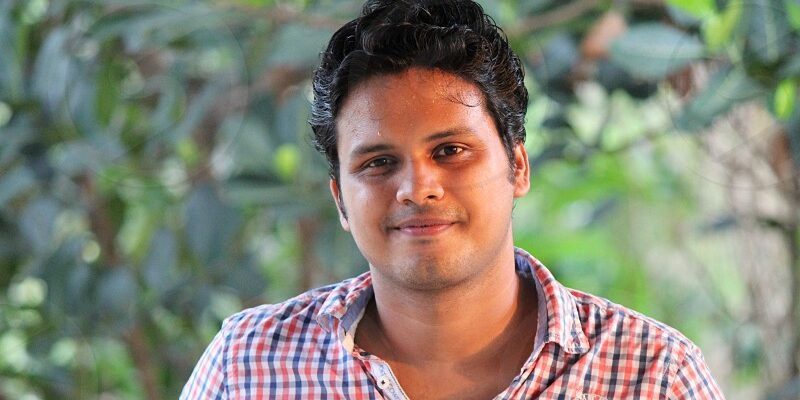Read time 3 minutes
When we talk about rare diseases in India, Fabry Disease often remains hidden in the shadows. Yet, behind the statistics are real people, patients and families navigating pain. This is the story of Dr Divyansh. He is a young doctor whose journey with Fabry Disease shows us why awareness, early diagnosis, and treatment matter.
A Childhood of Unanswered Questions
From the age of six, Divyansh experienced burning pain in his hands and feet, extreme fatigue, and heat intolerance. Doctors treated him for common conditions, but the symptoms kept returning. Like many rare disease patients in India, he spent years searching for answers.
The Diagnosis That Changed Everything
The turning point came when his brother developed kidney issues. Genetic testing revealed that both brothers had Fabry Disease. It is a rare X‑linked genetic disorder caused by the deficiency of the enzyme alpha‑galactosidase A.
Without this enzyme, fatty substances (Gb3 and lyso‑Gb3) build up in the body, damaging vital organs such as the kidneys, heart, and nervous system.
For Arvind, the diagnosis was frightening but also a relief. Finally, there was a name for his suffering.
The Turning Point: Enzyme Replacement Therapy (ERT)
In 2018, Divyansh was enrolled in a humanitarian program that provided Enzyme Replacement Therapy (ERT). Twice a month, he traveled to Delhi for infusions. Slowly, his health began to improve:
-
Pain reduced in his joints and limbs
-
Energy levels increased, allowing him to work longer hours
-
Heat tolerance improved, making daily life more manageable
Today, he continues his medical career while advocating for early detection of Fabry Disease.
Understanding Fabry Disease: Key Facts for Readers
Prevalence:
Globally, Fabry affects 1 in 40,000–60,000 people. In India, experts believe it may be underdiagnosed due to lack of awareness and genetic testing.
Symptoms:
Burning pain, skin rashes (angiokeratomas), kidney dysfunction, heart enlargement, hearing loss, and strokes.
Types:
Classic Fabry: Symptoms begin in childhood.
Late‑onset Fabry: Symptoms appear in adulthood, often with heart or kidney complications.
Inheritance:
X‑linked. Males are usually more severely affected, but females can also develop symptoms.
Treatment Options
The treatment landscape for Fabry Disease is evolving rapidly:
1) Enzyme Replacement Therapy (ERT):
- Fabrazyme (Sanofi) and Replagal (Takeda) are widely used.
- Elfabrio (Chiesi/Protalix) offers longer half‑life and fewer infusions.
2) Chaperone Therapy:
- Migalastat (Galafold) is an oral drug for patients with specific mutations.
3) Emerging Therapies:
- Gene therapy trials are underway, aiming for one‑time, long‑lasting treatment.
- Substrate reduction therapy and mRNA therapy are in development.
Divyansh adds:
He is still searching and contemplating for medicinal support in other genres of medicine.
Challenges in India
Treatment costs remain extremely high (₹20–40 lakhs per year). Under the National Policy for Rare Diseases (NPRD 2021), patients can receive up to ₹50 lakhs in financial support, but access is uneven.
Fabry Disease in India: Awareness and Advocacy
Underdiagnosis:
Many patients are misdiagnosed with psychological or unrelated conditions.
Policy Support:
NPRD 2021 recognizes Fabry under Group 3 (Lysosomal Storage Disorders).
Patient Networks:
LSDSS India offers support and advocacy.
Fabry International Network connects patients globally.
Why Dr. Divyansh’s Story Matters
Fabry Disease is not just a medical condition. It’s alife journey.
Divyansh’s story reminds us that with timely diagnosis, treatment, and support, patients can live fulfilling lives.
His message is clear:
“If a child has unexplained pain, recurrent fevers, or growth issues, don’t ignore it. Ask for genetic testing. Early detection can save lives.”
Key Takeaways for Readers
- Fabry Disease is rare but serious—early diagnosis is critical.
- Treatment exists (ERT, chaperone therapy, emerging gene therapy).
- Support networks in India are growing, but awareness is still low.
- Patient stories like Divyansh’s can inspire families to seek answers sooner.
DISCLAIMER
This story reflects personal experience and is not intended as medical advice. Always consult a medical professional for health-related concerns.


